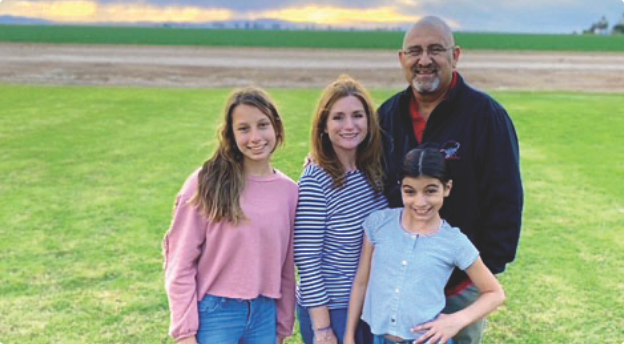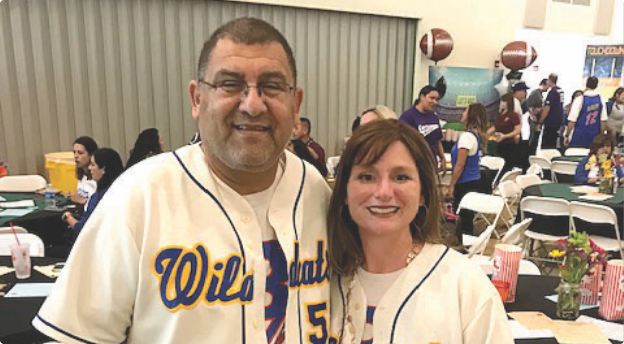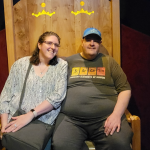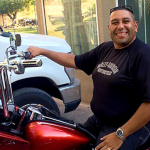Doing What’s Best – for Life: Tony’s CAPD Experience
In Tony’s day-to-day world, every minute counts. From the moment he wakes up, he has people counting on him to be at his best – and his healthiest. At work, he’s a principal at an alternative high school, overseeing faculty and nearly 200 students. At home (and wherever else life takes him), Tony is married with two teenage children to care for. He also has two adult children, nine grandchildren, and one great-grandchild, all of whom love spending time with him.
Suffice it to say, even at 59, Tony’s life doesn’t slow down for much. So, when he had to start dialysis in his mid-50s, he wanted a treatment that would take as little of his time and energy as possible. For him that treatment was – and still is – continuous ambulatory peritoneal dialysis (CAPD).

“I had the option to retire at 55, and I knew that many people on dialysis retire or go on disability, but I wanted to try and be successful at both my job and dialysis.”
Before Tony’s PD success came kidney failure, brought on by diabetes – a disease Tony says he didn’t take seriously enough. He admits to being carefree and careless in his younger years, and not paying much attention to his diet or medications. Eventually,
years of neglecting his condition caught up with him, seemingly out of nowhere. But
as little as Tony knew about the dangers of diabetes, he knew even less about kidney disease and dialysis.
“I didn’t have a clue what dialysis was, I was really scared. You hear stories about it being a really bad thing. I had no idea what to expect.”
What Tony knew for sure was that he wanted to keep working, and that being in a clinic three days a week wouldn’t fit his lifestyle. His nephrologist recommended CAPD, a therapy that can be done almost anywhere, because there’s no machinery involved. After two weeks of training, Tony was able to go home. He felt better about dialysis but was still nervous about his new stage of life.
“You don’t know exactly what you’re getting into. You’re scared you might not do it right. But after a few weeks, it just became a routine part of my day.”
Tony’s daily PD routine includes four exchanges. An exchange is the process of draining and refilling your abdomen with dialysis solution, which works with your body to remove toxins, excess fluid, and waste, taking over some of the lost functions of the kidneys. He starts with an exchange just after he wakes, does a second exchange at home during his lunch break, another after work, and a final exchange just before bed, around 10 or 11 p.m. Each exchange takes about 30 or 40 minutes.
“We converted a bedroom into a dialysis room to make things easier,” Tony explains. “We even added a sink to help keep the process as clean as possible. I also use the stay•safe® CAPD system, which is a lifesaver and a time saver. At lunchtime, I can go home, do an exchange, and get back to work without missing a beat.”

At one point, about three months after he started dialysis, Tony decided to try automated peritoneal dialysis (APD) – typically done overnight, using a machine called a cycler to perform exchanges – but he had a hard time adjusting. He says it was sometimes difficult to stay asleep and alarms would often wake his wife, who is a light sleeper. But more difficult than anything else for Tony was feeling “stuck” once he started a nightly cycle.
Unlike CAPD, most APD programs require patients to complete exchanges in one sitting, overnight, which last several hours. The benefit of his CAPD schedule is that performing the exchanges only takes Tony around 2 hours each day, leaving plenty of time for work, family, errands, projects, etc.
“I feel like CAPD disrupts my life as little as possible and, for the most part, allows me to continue living as I always have.”
Tony also says he feels restored by his exchanges, giving him the energy to make the most of his time and pursue his calling as an alternative high school principal, overseeing faculty and students. He recognizes that his overall health and wellbeing are better because of CAPD.
“Without CAPD I would be in bad shape,” he says. “Before I started, I was tired, drained, and feeling bad all the time. I started a second family later in life, and my daughters are 15 and 12. I want to make sure I’m around when they are older. That’s why this therapy is so important to me.”
Not all patients may experience these benefits





